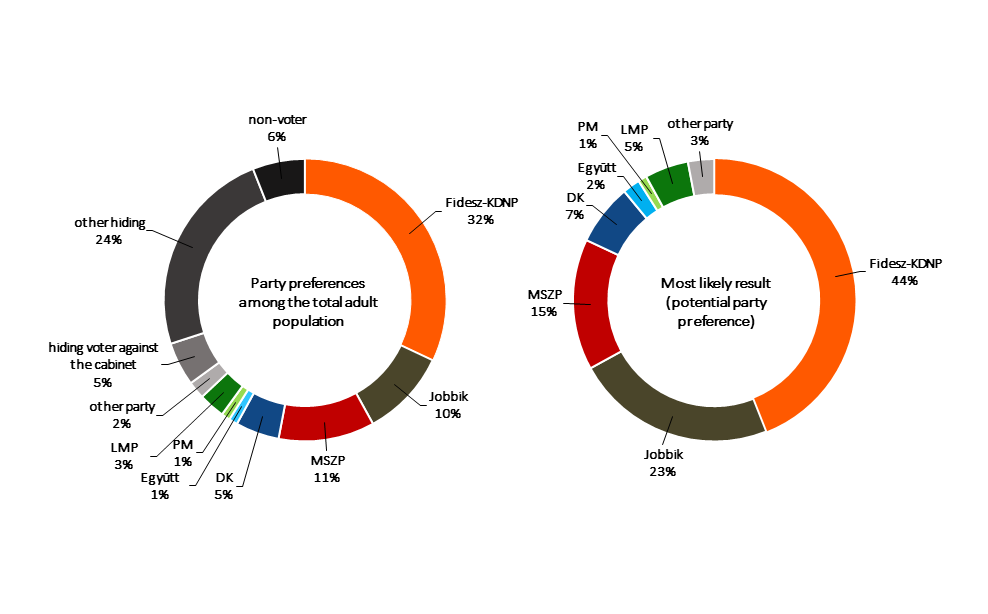Jobbik has been not been able to gain any strength during the first month of this year compared to the low point they reached at the end of last year, in fact, the party has just been overtaken by MSZP for the first time since the end of 2013 within the total adult population – although by only 1 percentage point within the margin of error.
Fidesz-KDNP has been able to maintain its supporter base in January, which was reinvigorated last September to its previous level. 32 percent of those polled sympathized with the governing parties, which in a statistical sense is identical to the 34 percent polled in December. The support behind the governing parties continues to be higher than the combined support of all opposition parties.
Jobbik has not been able to gain any momentum during the first month of this year compared to the low point they reached by the end of last year; the party’s support currently stands at 10 percent within the total adult population.
In addition to the recent development that the socialists have overtaken Jobbik within the margin of error based on the respondents polled, they have also been able to increase their support versus DK within the left-wing opposition camp. MSZP’s support is therefore at 11 percent within the total adult population, while Ferenc Gyurcsány’s party is favored by only 5 percent. On the other hand, the Left (MSZP, DK, Együtt, PM) has not been able to make any substantial gains altogether. Együtt and PM draw about 1 percent each, respectively, while LMP is supported by 3 percent of those asked.
Based on the most probable outcome of voting by lists (potential voters) Fidesz-KDNP has 44 percent, Jobbik has 23, MSZP has 15, DK has 7, LMP has 5, Együtt has 2, and PM is at 1 percent.
Methodology
This most recent public opinion telephone poll by Nézõpont Intézet was completed during January 15-19, by asking 1000 people. This sample is representative, pertaining to a cross-sample of the population 18 years and older, classified by gender, age, region, settlement type and schooling completed. Samples using 1000 respondents have a maximum margin of error of 3.2 percent.
